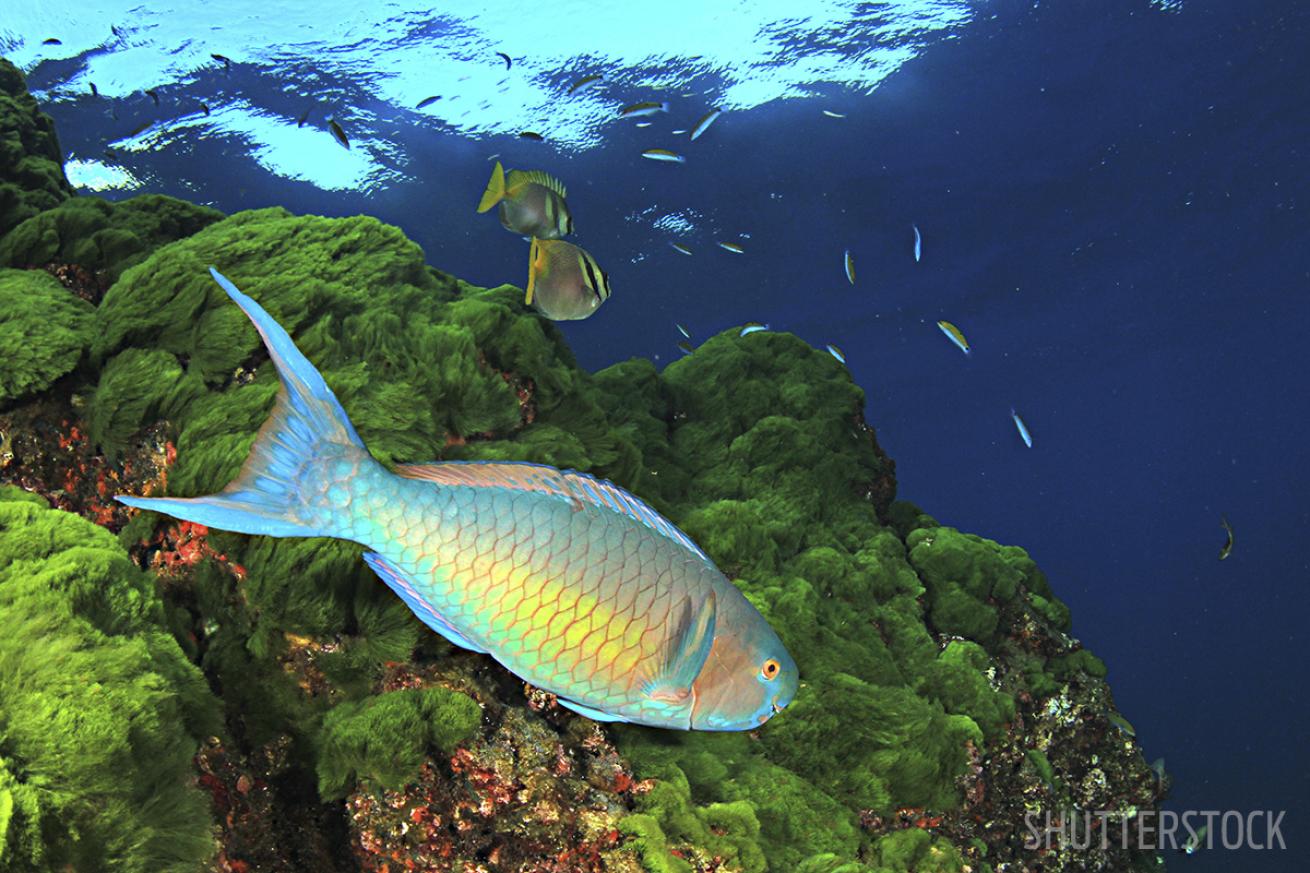Fish Move To Cooler Water As Ocean Temperatures Rise

ShutterstockTropical fish are finding their way to cooler waters, where they can disrupt existing ecosystems — like kelp forests.
Invasive species can cause serious problems — scuba divers don’t need to look much further than the Caribbean’s lionfish infestation to see proof of that. As the ocean heats up, with the potential to rise 37.4 degrees Fahrenheit by 2100 under the Intergovernmental Panel on Climate Change’s highest emissions scenario, other animals will find their way into new locations in an attempt to find cooler waters. The marine life we are scuba diving with today could very well be the invaders of tomorrow.
Corals rely on a precarious balance of environmental conditions to thrive. The National Oceanic and Atmospheric Administration states that the optimal temperature for coral growth is between 73 and 84 degrees Fahrenheit (they also require appropriate pH levels and a host of other considerations). The fish that live among the reefs also play a part in maintaining this environment — herbivores like parrotfish and rabbitfish scrape away algae that would otherwise smother the reef and clear space for new corals to colonize. But what happens when you can’t take the heat? You get out of the kitchen.
A 2014 paper in the ICES Journal of Marine Science by Miranda Jones and William Cheung of the University of British Columbia estimated that marine fish and invertebrates will shift with a median rate of 16 miles per decade; these tropical vagrants have already started appearing throughout the world. And when the new kids roll in to town, there’s often culture clash.
When these tropical grazers find their way to temperate regions, they do what they’ve always done — eat the green stuff. This can have a devastating effect on kelp forests and seagrass beds and disrupt local ecosystems. According to National Geographic, examples can already be found in Japan, Australia, the Mediterranean and the Gulf of Mexico where underwater forests have been laid bare. The barren landscape also acts as a potential beachhead for coral and an invasion of reef dependent life. Without the kelp, local temperate critters lose shelter and food and will face a crisis of their own. This mix of endemic and invasive species will lead to increased competition, and not everyone will swim away a winner.
Jones and Cheung’s model estimates that under the highest emissions scenario an average of 6.5 species will become locally extinct for every 0.5 degree of latitude between 10 degrees north and 10 degrees south between 2000-2050. Those that survive will do so by pushing into new territory or by adapting to the new normal. Who will remain when the bubbles settle is the question scientists are still trying to answer.
“We’re still trying to understand which species will be the winners with all this environmental change and which species won’t do as well,” say Malin Pinsky, an ecologist from Rutgers University studying marine communities. “Even from a coral perspective, there are some corals out there that do surprisingly well when the water is really hot.”
What species will continue to thrive and where will they be located in the not-so distant future? Whether corals adapt to heated waters or head for cooler climes, one thing seems certain: the underwater realm we explore tomorrow could look very different from the one we know today.










